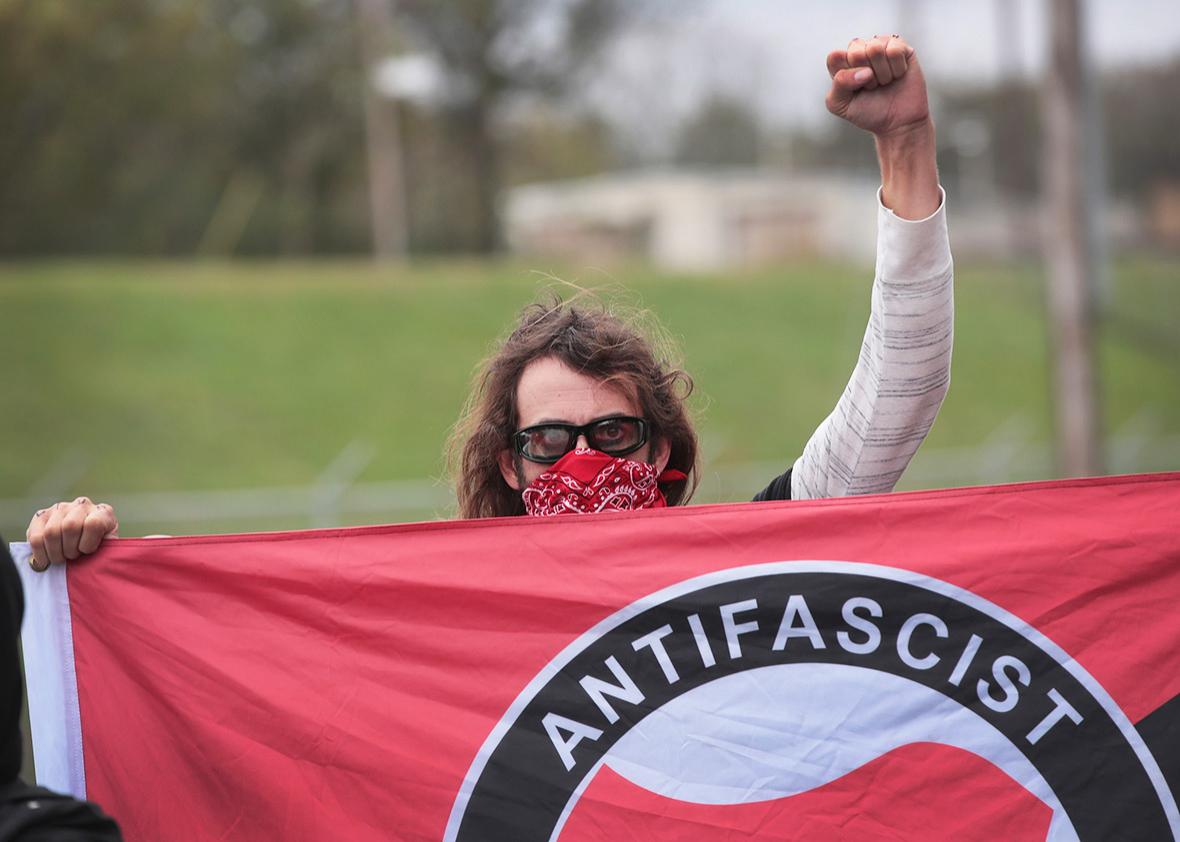For some small subset of right-wing Americans, this random November weekend is going to be big. In his newsletter Right Richter, Will Sommer outlines the Nov. 4 conspiracy theory, which was born on YouTube (where else?): “On Nov. 4, [right-wing Trump supporters] expect antifa to terrorize the country, going house to house stealing guns and, depending on which version of the theory you believe, murdering white people, Christians, and/or Trump supporters.” YouTubers are showing off their gun collections, sending a message to Nov. 4–ers: We are formidable opponents. Alex Jones, who’s signed on to this theory, warned his audience that the marauding activists would be packing shanks as well as AK-47s. Sommer notes “fabricated planning documents” have been circulating on Facebook, purportedly telling antifa participants to dress in MAGA gear to fool opponents.
One the one hand, you can see why some people have found this pretty funny. Krang T. Nelson (a comedian who uses a pseudonym on the platform) got suspended by Twitter for making a good joke about it. Tim Faust tweeted a screenshot of a Facebook post proclaiming that MS-13, the New Black Panthers, and Black Lives Matter would be joining antifa in their rampages this weekend. The replies to his tweet dunk mercilessly on this insane screed: “Work is making me come in on the 4th. Do I have to return the gun and ammo or just my Soros payment?”; “I’m so sick of antifa planning all this fun stuff and not telling me abt it.” One more kindly minded person wrote: “I feel like mocking this is mean, they clearly suffer from massive delusions.”
On the other hand, it’s not funny at all. In researching our Slate Academy podcasts on slavery and Reconstruction, Jamelle Bouie and I read about example after example of white Southerners panicking over supposed insurrection plots of enslaved people and freed people. During slavery, often invoking the specter of the Haitian Revolution, slaveholders and poor whites alike worried that they would wake up to find guns in their faces and their children murdered. (There were always dead children in these fantasies. Could it be that selling other people’s families for money left a psychic mark?)
These rumors of plots had bloody consequences. I keep thinking about the panic Joshua D. Rothman writes about in Flush Times and Fever Dreams: A Story of Capitalism and Slavery in the Age of Jackson. This conspiracy theory, which spread through central Mississippi in 1835, was the brainchild of an unsuccessful white speculator, Virgil Stewart. Stewart wrote and sold a baroque, bloody pamphlet about another white man’s supposed plan to spark a slave rebellion. Even in its time, Stewart’s account was met with skepticism, but that didn’t matter. A “committee of public safety” (basically a jumped-up group of vigilantes) executed up to 20 people, both enslaved and white, after extracting confessions by torture.
What’s most instructive about the panic Stewart began is the atmosphere that nurtured it. Rothman writes that the people moving to the cotton frontier at that time were living at the edge, hoping that the speculative leap they had taken in going West would pay off. In that atmosphere of fear and anxiety, news of a plot like this didn’t need to be correct in order to seem actionable.
And the deadly history of insurrection panic didn’t stop after the war. In early Reconstruction, the nascent Klan and similar groups used rumors of insurrection to buttress their case for white vigilantism, seizing upon any assembly of freed people as evidence. In Camilla, Georgia, in 1868, white citizens viewed a march led by a black representative unfairly expelled from the state Legislature as a possible “war, revolution, insurrection, or riot of some sort.” “To the whites of Camilla, such a procession could only constitute a ‘mob,’ with no civil or political standing,” Steven Hahn writes. White citizens fired on the marchers, killing about 12 and wounding 30.
Is right-wing jumpiness over Nov. 4 equivalent to the toxic anxiety whites felt in these historical examples? I know we’re not living in the 19th century, and the law, in most places, has a little more power to stop or punish extralegal violence. But white supremacist ideology is inherently violent, and there’s enough of an echo here to make me nervous. “Nov. 4 will likely come and go quietly,” Sommer writes, “and the theorists will be convinced that their videos scared off the antifa putschists. And plenty of angry, scared, increasingly armed people have been a little more convinced that their lives and homes are under threat and their country out of control.”
